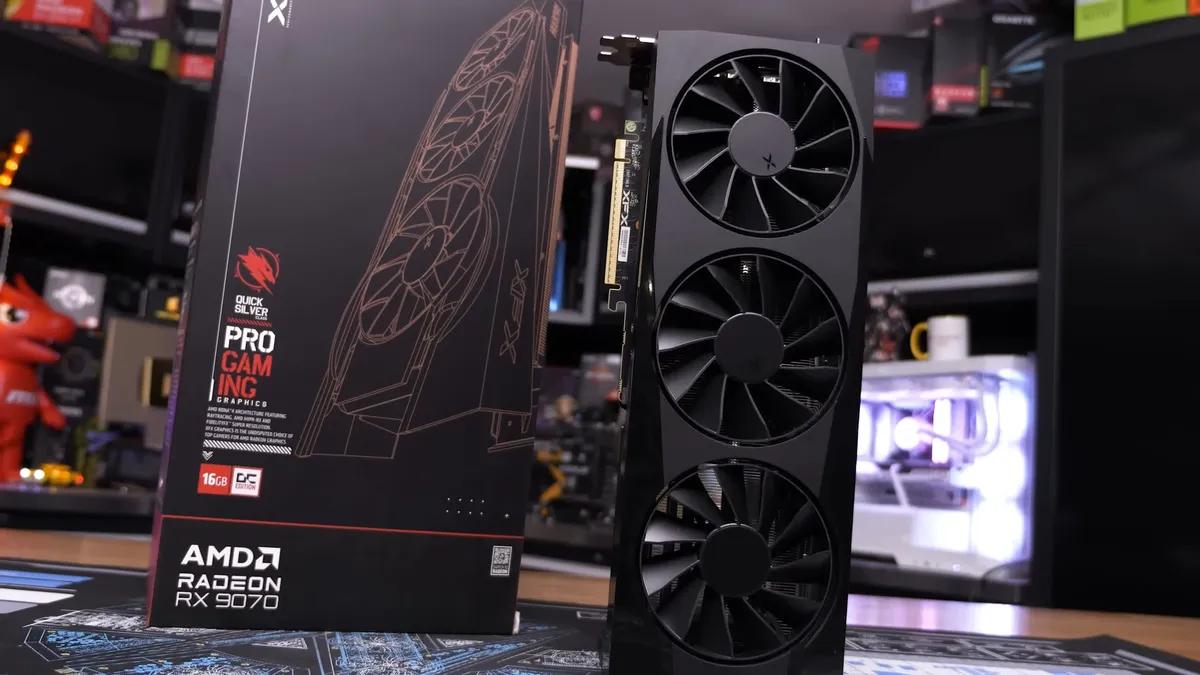
AMD seems to have made a significant impact with the release of the Radeon 9070 XT. Early reviews have been overwhelmingly positive, and the reception from gamers has been even more enthusiastic. The next crucial step for AMD is to ensure that these GPUs are readily available for gamers at the expected Manufacturer’s Suggested Retail Price (MSRP). We anticipate that this will happen in the coming days. Before we delve deeper into the more affordable option—the Radeon RX 9070 (the non-XT model)—it's essential to examine its pricing and performance.
Interestingly, AMD has set the price of the Radeon RX 9070 at $550, which aligns it with the anticipated MSRP of the Nvidia RTX 5070. Based on the impressive performance of the 9070 XT, the RX 9070 is expected to outperform Nvidia's RTX 5070. One notable advantage is that AMD's GPU includes more VRAM—16GB compared to the RTX 5070's 12GB. This extra memory could be crucial for gamers looking to fully utilize features like frame generation and ray tracing.
Here's a quick comparison of the key specifications between AMD's latest GPUs:
Model Price (MSRP) Release Date Die Size (mm²) Core Configuration Memory Capacity Radeon RX 9070 XT $600 March 2025 357 4096:256:128 16 GB Radeon RX 9070 $550 Dec 2022 529 3584:224:128 24 GB Radeon RX 7900 XTX $1000 Feb 2024 6044 6144:384:192 20 GBWhile the RTX 5070 competition is noteworthy, the more pressing concern for the RX 9070 is its higher-end sibling, the Radeon 9070 XT, which is priced only $50 more. This slight price difference translates to an 8% discount for the RX 9070. However, with 13% fewer cores and texture mapping units, the performance downgrade may be more substantial than the price difference suggests. Before we dive into performance benchmarks, let’s take a look at the graphics cards we tested.
For our evaluation, we utilized three models: the Sapphire Pure RX 9070, the PowerColor Hellhound, and the XFX Quicksilver. The cooling performance was impressive across the board, with the Pure model reaching the lowest temperatures:
Pure RX 9070: 53°C junction temperature PowerColor Hellhound: 59°C junction temperature XFX Quicksilver: 58°C junction temperatureLet’s explore the performance metrics across various popular games:
At 1440p, the RX 9070 averages 77 fps, making it 13% slower than the 9070 XT but still outperforming the RTX 5070 by 7%. The 4K performance, however, drops to an average of 41 fps, trailing the RTX 5070 by 7%.
In this title, the RX 9070 is 5% slower than the XT at 1440p, edging out the RTX 5070 by 6%. However, at 4K, it becomes 18% slower than the XT version.
Here, the RX 9070 performs admirably, being 10% slower than the XT at 1440p and 15% faster than the RTX 5070. At 4K, this lead grows to 20% over the 5070.
The RX 9070 shows strong results, being 8% slower than the XT at 1440p while outperforming the RTX 5070 by an impressive 40%.
When examining power consumption, the Radeon 9070 is a more efficient option, consuming 15% to 23% less power than the 9070 XT. In comparison to the RTX 5070, power consumption fluctuates, with the RX 9070 drawing slightly more power in certain scenarios, such as in Starfield.
Ray tracing performance is critical for gamers interested in cutting-edge graphics. In titles like Metro Exodus Enhanced, the RX 9070 performs competitively but is generally 13% slower than the XT. While the performance isn't groundbreaking, it marks an improvement over the previous generation.
In summary, while the Radeon RX 9070 offers decent performance, it may not be the best option when compared to the 9070 XT. For just a $50 increase, gamers gain significantly better performance. If the RX 9070 is available at MSRP, it might still appeal to budget-conscious gamers, but overall, the 9070 XT is the superior choice.
As we continue to monitor the GPU market, we will provide updates on pricing and availability soon. For now, the Radeon RX 9070 stands as an interesting option, but with a clear preference for the 9070 XT for those who can afford the slight premium.